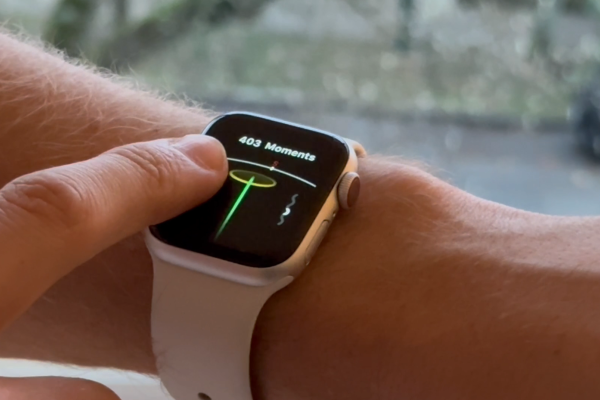Experiencing personal location history data with Memory Tracer
Timeframe
2019 ↝ 2023Keywords
- Research Product
- Research Through Design
- Slow Technology
- Metadata
- Interaction Design
- Domestic Technology
- Digital Archives
- Design Theory
Outcome
-
↬
Novel Slow Interaction Design
-
↬
New tools for working with location history data as a design material
-
↬
Papers at CHI 2023 & DIS 2020
The Core Idea
Instead of immediately ‘telling you’ where you were on this day in this past, Memory Tracer’s algorithm is designed to encourage contemplation as locations were at are slowly revealed over time.
Design Process
How can personal location history archives be meaningfully experienced as they grow to unprecedented scales? What opportunities exist to support reflective, ongoing experiences that use this data for everyday reminiscence on past places and activities? Memory Tracer is a household object that occasionally, yet indefinitely surfaces locational moments from a person’s past, making them available to be re-experienced while subtly indicating how deep in the past they are coming from.
Early on, we desired to create a design that expressed a continual and gradual reveal of a location over time. We believed such a slow reveal could help build anticipation wile expressing something significant about a location as it gradually emerged and became more legible.
We initially explored an ‘hour glass’ like approach where a location would be revealed after the screen was eventually full. Yet, we found the display attracted too much attention due to its brightness and the cube-like form to be too mundane.
We pivoted to developing a pixelated map that had aesthetic appeal and was better suited to express details about a geographic location from one’s past.
We found that cropping the corners of the LED matrix to creating a more circular display offered a more organic, unobtrusive aesthetic — something that could be lived with in one’s life over a long time period. This design decision made the light look more like a portal that could be looked into, which achieved the quality of inviting peering into.
We appreciated the aesthetic and weight of cement as a durable material that lasts over time, yet passing light through it was a problem. Eventually, we developed a novel technique of embedding fiber optics in cement to better channel and express the light through the cement monolith-like form.
Through numerous iterations in form and materials, we arrived at the final version of Memory Tracer which is hand cast in rockite using a custom designed silicon mold.
The final research product version of Memory Tracer in a rockite enclosure with embedded fiber optic cable, LED display, Raspberry Pi Zero, protoboard for connections, push button, USB-C breakout board, power supply, and enclosure screws.
Interaction Design
Reflecting on how Memory Tracer's pacing could express time inspired us to align the number of days it takes for a memory to reveal with the number of years in the past that memory occurred. We also decided to not just reveal a single moment, but instead reveal the entire location day. Then when interacting with the device, it would show where we had been, at the current clock time. For example, If we looked at Memory Tracer at 7:05pm on June 21, 2022 it would show where we had been at 7:05pm on June 21, 2015 (visualized by the small red dot).
Outcomes & Implications
Memory Tracer illustrates how the design quality of pre-interaction can be mobilized not only through subtle, gradual changes in the design artifact’s output (e.g., light-based visual changes) but also through leveraging the pacing itself as a form of shifting temporal expression. These qualities can come together to prime experiences of reminiscence on past experiences bound to places that continually recur and diverge across the calendar year, and which subtly expand as the location history archive and user age over time.
As a design case, Memory Tracer demonstrates how enabling people to cede autonomy to explicitly slow systems can make time for pause and reflection through uncontrollable, gradually changing expressions of their personal location histories.
Memory Tracer & Memory Compass: Investigating Personal Location Histories as a Design Material for Everyday Reminiscence
- Jordan White,
- William Odom,
- Nico Brand,
- Ce Zhong
Memory Tracer & Memory Compass: Investigating personal location histories as a design material for everyday reminiscence
- Jordan White
Exploring Location Histories as a Design Material for Reflection with Memory Compass & Memory Tracer
- Jordan White,
- William Odom,
- Nico Brand
Acknowledgments
-
↬
This research is supported by the Natural Sciences and Engineering Research Council of Canada (NSERC), the Social Sciences and Humanities Research Council of Canada (SSHRC), and the Canada Foundation for Innovation (CFI).
-
↬
We thank Ce “Kimi” Zhong for their assistance in fabricating various iterations of Memory Tracer.


